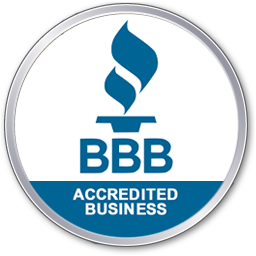If you’re starting to worry that you may have a mold problem at home, those worries may not be unfounded. A whopping 70% of households have some amount of mold growing in them.
Low mold levels aren’t likely to cause serious problems, but that doesn’t mean that you should leave mold growth alone. Mold can grow rapidly when moisture is present, and a small mold problem can become a big mold problem in a matter of days or weeks.
How can homeowners tackle mold removal in Portland? Is this something that you can do on your own or should you call in the experts?
We’re here to provide mold removal information and tips so that you know what to do the next time you spot any mold growth in your home.
Mold Basics
Mold is a living organism that is simultaneously simple and complex. Mold needs very few things to survive and can produce spores that are invisible to the naked eye. These spores travel through the air, where you can breathe them in–or they can land on new surfaces and continue a pattern of rapid growth.
There are thousands of different types of mold on our planet and mold exists almost everywhere we go. Some types of mold are considered benign, which is to say that they aren’t harmful. However, many of the types of mold that grow in residential spaces are not so benign, especially when they grow in large quantities.
5 Common Types of Mold Found in Homes
When you discover a major residential mold problem, you may not feel inclined to schedule mold testing. When the problem has gotten out of hand, there’s little question of whether or not it’s posing a problem.
However, mold testing can come in handy. Identifying the type of mold in your home can allow you to use more precise mold removal steps. Let’s talk about the most common types of household mold and more.
Identifying and Locating Different Types of Mold
The five most common types of mold and their features include:
- Cladosporium: an allergenic mold that is often olive green or brown and has a texture similar to suede. This type of mold is often found growing on textiles like carpeting or mattresses, but can also grow on hard porous surfaces like wood.
- Stachybotrys (aka black mold): a toxigenic mold that is dark green or black. This type of mold grows on materials like cardboard and wood.
- Acremonium: a toxic mold that has a shifting appearance and produces a distinctly bad odor. This mold tends to grow in air ducts, humidifiers, and HVAC components.
- Mucor: an allergenic mold that grows in white or grey patches. Once again, this mold tends to grow in HVAC components and ducts.
- Alternaria: an allergenic mold with a brown or green color and a velvety or fibrous texture. This is a common mold that tends to crop up in bathrooms.
As you can see, these common types of mold range from allergenic to toxigenic. They are not benign varieties that will have no negative impact on your health.
Why Is Mold Growing in My Home?
Most homeowners are aghast to find mold growing in their homes. Does mold growth mean that you haven’t kept your house clean?
Simply speaking, mold growth indicates an issue of moisture, not a lapse of cleanliness. As the EPA states, none of the thousands of mold varieties can grow without moisture.
In an area of the country with high rainfall, like Portland, OR, many homes have high indoor humidity levels. This, alone, can prompt mold growth.
However, significant residential mold growth tends to occur in response to water damage or water leakage. A leaking roof, pipe, or appliance may be the culprit. That means that mold removal is the first step, but tackling that moisture issue is necessary to keep mold at bay in the future.
Can Mold Cause Health Issues?
We’ve mentioned already that common household molds are often allergenic, toxic, or toxigenic. This means that yes, mold growth can cause health issues.
Because mold spores are airborne for at least part of their lifespan, you can breathe them into your lungs. They can also cause irritation on the eyes, skin, and other sensitive areas. Mold-related health issues can include:
- itchiness
- sore throat
- runny or clogged nose
- difficulty breathing
- headaches
- confusion or agitation
People who already suffer from asthma, allergies, or other respiratory disorders are most likely to feel the negative impact of indoor mold growth.
Mold Remediation
Mold remediation is not quite the same thing as mold removal. Mold remediation is a thorough process of mold testing, mold removal, and any demolitions, repairs, and sanitation needed to make your home safe to live in and reduce the possibility of future mold growth.
Why is this full process important? Mold removal can be a tricky and time-consuming task, especially when completed on your own. It’s frustrating, to say the least, to take on that task only to have mold growth return soon thereafter.
Mold remediation tackles the source and also involves the disposal of any affected items or materials that you can’t restore. For example, while you can remove mold from solid surfaces like tile, you’re better off disposing of and replacing materials like insulation.
When you’re dealing with serious mold growth, mold remediation is the only safe mold solution.
Removing Mold Yourself (Safely)
What if you have contained or early mold growth in your home? You can tackle small or manageable amounts of mold growth with the right tools and know-how.
Before you get started, you will need the right protective gear and mold removal equipment. This will include:
- an n95 mask or respirator
- latex gloves
- safety goggles that do not have vent holes
- a wet vac
- a dehumidifier
- cleaning solutions like bleach (which must be handled with caution)
Make sure that you do your research and read manufacturer instructions before using cleaning chemicals. Be sure not to mix chemicals that can create toxic fumes when combined, like bleach and ammonia.
Follow These Mold Removal Steps
To remove mold from your home, you will need to follow these steps within 24-48 hours of water damage:
- Put on your protective gear and make sure the area is clear of all children, pets, and people with respiratory issues.
- Remove any wet materials from the area and use a wet vac to remove standing water from structural materials like carpeting, floors, and other hard surfaces.
- Open all doors and windows, including doors to affected closets and cabinets, to improve airflow and help wet areas to dry out.
- If it is safe to use electricity, use dehumidifiers to further dry out the area and remove moisture from the air. If no mold is present, you can also use fans for this process. If mold growth has begun, avoid using fans, which will cause mold spores to disperse.
- Clean all visible mold with water and your cleaning solution of choice and dry these areas right away.
Additional Mold Removal Tips
When mold grows on porous surfaces like caulking, you may struggle to remove it. It’s tempting to caulk or paint over surfaces like this, but do not do this. Mold can continue to grow underneath paint, caulking, and other materials, which means that you need to remove the mold before applying new materials.
If you can’t dry out an item within 48 hours, you may need to throw it away. As we mentioned already, many materials are easier, safer, and cheaper to replace, rather than preserve.
If you have any water-damaged or moldy items that you wish to preserve but that are difficult to clean and restore, check out these restoration tips from the Smithsonian Institute. You will need to use material-specific cleaning supplies or take these items to a specialist for restoration.
Professional Mold Removal in Portland
No homeowner wants to walk into their kitchen or bathroom and discover new and serious mold growth. However, if you do spot mold growth anywhere in your home, we urge you to act fast. Mold spores spread faster than most homeowners realize, and a small problem left unattended can bloom into a serious residential mold problem.
If you’re looking for professional mold removal in Portland, consider Alpha Environmental. We offer full mold remediation services, including mold inspections, testing, and removal. We also offer additional remediation services, including radon mitigation, sewage mitigation, lead testing, and more.
Contact us to find out more about how we can help or schedule your mold remediation services today.




